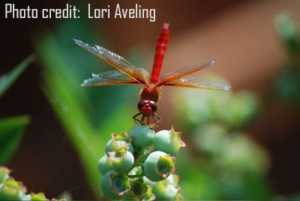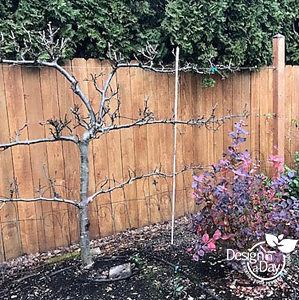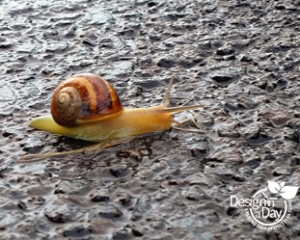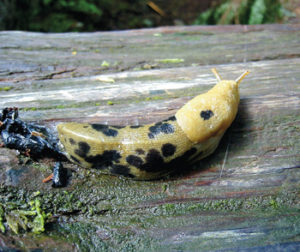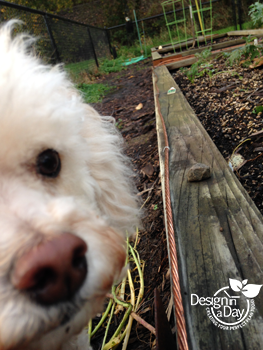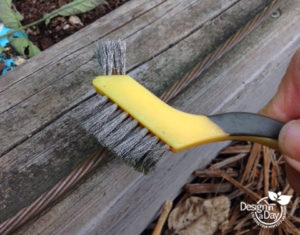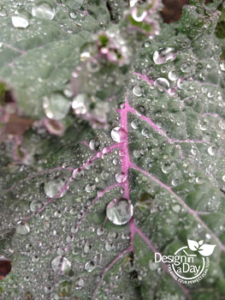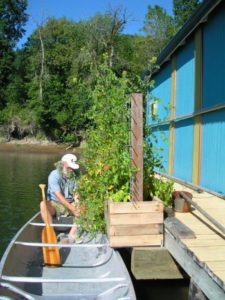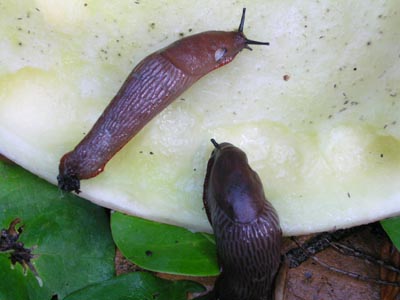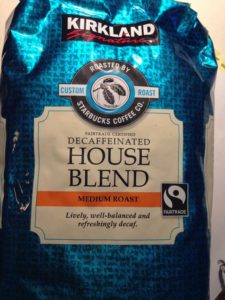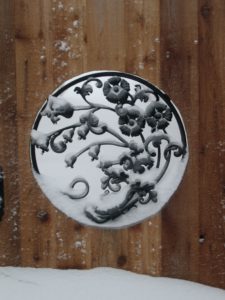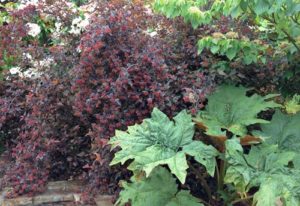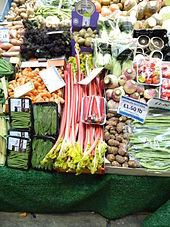Portland Fruit For Your Garden Design
 My client Sherry has been in her new home and garden for about 5 years now. She has kept me informed about her garden adventures so I’m sharing them with you. It’s great to see people having fun with edibles and her garden and experience show how much you can learn over time and the rewards of yumminess that result. Here are excerpts lightly edited for clarity.
My client Sherry has been in her new home and garden for about 5 years now. She has kept me informed about her garden adventures so I’m sharing them with you. It’s great to see people having fun with edibles and her garden and experience show how much you can learn over time and the rewards of yumminess that result. Here are excerpts lightly edited for clarity.
Fig Report
“Hi Carol,
My garden is thriving. Be careful what you wish for. You know that fig we transplanted from the old house that I didn’t think would make it has thrived. I had to learn how to prune it for fruit production. At first I pruned it in the winter then I learned that I had to wait until after the late spring early summer harvest to prune it. This way the tree can put on new growth for next years crop. I didn’t know that figs only grow on last year’s new growth. I’m not sure what variety I have, it has green skin and pink flesh. The July harvest is plentiful but determinate—all fruit ripening over in a 2 week period. I had to give a lot away to neighbors and the food bank to keep from wasting them. The fall crop was small so I have taken to doing the pruning in late summer which impacts the fall crop drastically….which is fine.
This year (2017) I had a large enough fall crop to take fig sample into my weight watchers group. I opened a few eyes on their yumminess Few had enjoyed fresh figs, fully ripened, right off the tree. These figs are my new summer pleasure. I pruned right after the first big harvest this year instead of waiting ’til later in the summer. There was enough new growth to produce a modest harvest in fall too.”
Berry Report
“Hi Carol
Here is my berry harvest schedule: We start in April with the Honeyberries-great in yogurt or muddled in a sparkling vodka drink.
May brings the early hood strawberries followed by the blueberries and then raspberries. Salal – a native evergreen shrub I love to eat the bitter but flavorful berries that set in late summer.
Now in August I am still enjoying a few blueberries as I planted some late varieties to extend the harvest and the day neutral (or ever bearing) strawberries provide an evening appetizer after I park the car. Once the raspberries were done, the OSU Thornless blackberries kicked in and will continue into late September.”
“Hi Carol
The blueberries are great. I have 4 different varieties and recently I moved them so they are closer together. My husband’s favorite is called ‘Peach Sorbet’. It’s an evergreen with purplish leaves in the winter and green leaves in the summer. Produces a large harvest, great flavor, medium to large berries. It was planted 3 years ago, and I collected fruit for 8 weeks this year. I surrounded the plant with a structure covered with bird netting because the birds (should be eating the seeds we provide them and) need to leave the blueberries for me and my husband. Another variety, ‘Top Hat’ is a prolific dwarf bush with small blueberries that pack a lot of flavor in such a small package.”
Espaliered Asian Pears
“I set it up with 2 grafted varieties in 2 rows, but this year I added the third top row because I had the room on the fence. One year I had a very low production rate due to the wet spring causing poor pollination even though the pear trees are near my extensive mason bee hosting program. To combat this I have learned how to hand pollinate and this was so successful that in 2017 I had to provide extra support to the limbs because the weight of the fruit was threatening to damage my tree’s structure. I harvested 99 Asian Pear – 100% success rate!!
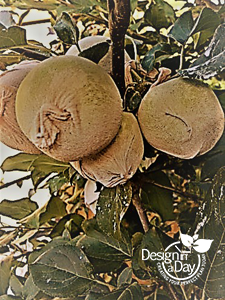
Organic coddling moth prevention on Asian pear in Portland landscape design
I don’t use pesticides so I wrap nylon socks with kaolin clay around each fruit after it gets about an inch in diameter. This is an organic method to stave off coddling moth. I also take off all but one flower from each fruit spur so I get fewer pears but they are bigger. We started getting good harvests in 2016 about 4 years after we planted our trees. Check out my photo…….was I proud or what?”
 Sherry is a Clackamas County master gardener and enjoys her garden on an 8,000 sq foot lot in Milwaukie. She has a tiny lawn for their dogs so the rest of the garden is dedicated to entertaining space, plants, edible plants, mason bees and love.
Sherry is a Clackamas County master gardener and enjoys her garden on an 8,000 sq foot lot in Milwaukie. She has a tiny lawn for their dogs so the rest of the garden is dedicated to entertaining space, plants, edible plants, mason bees and love.

